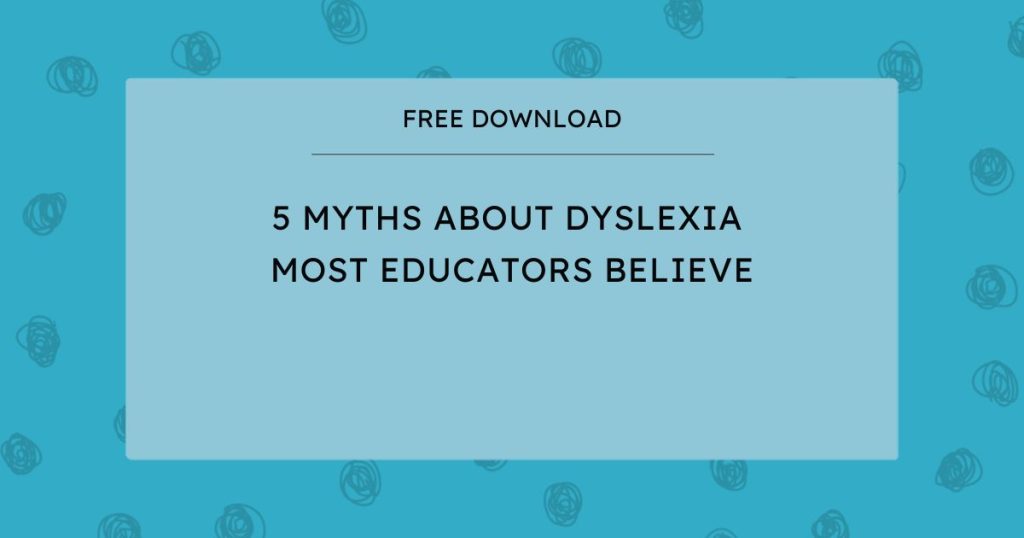As a parent you know when your child is struggling. You know it even when others try to tell you everything is fine. You know it because you see how hard they struggle to read, homework is a battle even in first grade and Kindergarten, and because other kids are starting to read with very little effort.
Early Signs
Looking back I know we were seeing the signs of dyslexia even in Preschool and Kindergarten. I just didn’t know it at the time. I even thought some of them were cute- like the way Amelia could never remember the names of new friends.
When she was in Kindergarten we moved into a new house and were lucky to have amazing neighbors right next door. Their oldest child was the same age as Amelia and the girls saw each other everyday- at school and at home. It took months for Amelia to remember this little girl’s name. Literally, for months, Amelia would address our new neighbor girl as “Hey, Friend!” We had daily rehearsals of me saying, “What is your so and so’s name?” but the time would come to play and in Ameila’s excitement she would see her new bestie and yell “Hey, Friend!”
This was cute at the time and still a fun memory but I know now that it was an early sign of poor working memory. Working memory is closely related to phonological memory and an area of deficit often seen in children with dyslexia.
Phonological Memory
Even to this day, I see the impact that phonological memory has on her ability to read. For example, we were working on syllable division for the word “enchantress”. She was able to break it up into it’s appropriate syllables: en/ chan/ tress. She could even read each part appropriately en/ chan/ tress; however, even after multiple practice runs of saying each syllable saying the word all together came out as a jumbled mess. “Entresta” “chanestra” “enchantra”. Her poor phonological memory prevented her from combining all three syllables into one smoothly articulated word.
Now we could have worked longer on it and I’m sure she would have eventually gotten it right but that particular night we had already worked on reading for 40 minutes and this was her “bonus word”. She was mentally fatigued and continuing to address the issue that night would not have benefited anyone.
Phonological Processing
Another early sign of dyslexia is poor phonological processing. This is a receptive language skill and has to do with an inability or difficulty processing sound units.
How this processing deficit presented for Amelia in preschool and Kindergarten was difficulty following directions or commands. It has nothing to do with how well the ear hears but everything to do with how the brain processes sounds that come into it. That being said, before we know Amelia was dyslexic multiple people, including myself, became concerned about her hearing. I had it checked- several times and each time it was “great”.
Being in a noisy environment was always harder which is why I think this deficit was amplified once she entered Kindergarten. I remember one instance we were out shopping and she had found a small toy ball. She was throwing it into the air. At this point I knew I needed to get her attention before giving a direction so I said “Look at me….[She looks straight at me] If you throw that ball again you will lose it.”
“Okay, Mommy”
Since I also knew she had trouble following through and I needed to make sure it’s not because she didn’t understand me I asked, “Now what did I just say?”
“I don’t know.”
She really didn’t.
This happened many times in our house. Her poor working memory and processing skills often worked against her causing lots of frustration and sadness for everyone involved. Now that I know what’s physiologically happening in these situations I try to offer her a little more grace but some days are just hard.
This also created frequent notes and phone calls about “behavior problems” in school. You need to know that I am totally on board with her having to follow the rules in school but the school has also let me down in more ways than one (please note that I said the school, not her teachers- that’s a post for a different day) and looking back I think a lot of the frustration we had in K-2 could have been avoided.
It was about the middle of First grade when I first became concerned with Amelia’s reading. I remember looking at her writing (illegible scribbles that she produced when attempting to write) one day and thinking “This is a problem”.
Phonological Awareness
As a speech-pathologist I knew enough that I figured out she was struggling with phonological awareness. In this example, it means that I could say “C-A-T” what word does that make? And she couldn’t tell me. It also means that I could say what sounds do you hear in “cat” and she couldn’t separate them to say C-A-T. These are examples of the phonological awareness skills blending and segmenting, respectively.
So I reached out to some of my other SLPs friends who worked in the schools. I was trying to find someone who would work on her phonological awareness (at this point I still didn’t realize she had dyslexia). One of them suggested I contact a local reading interventionist who was trained in the Orton-Gillingham reading approach.
This wonderful woman was the first person to say the “D” word to me. She had worked with Amelia a couple of times and then told me she thought Amelia had several signs of dyslexia.
I’m pretty sure my reaction was something like this…..”What? No. That can’t be right. Reversals are still age appropriate in first grade.”
I am now ashamed to admit that at the time I thought dyslexia was just seeing letters and words backwards.
I was oh so very wrong.
I went home and promptly searched online for symptoms of dyslexia and what did I find? A list of signs and symptoms on the International Dyslexia Association website described everything I had been seeing in Amelia. I just didn’t know they were all signs of dyslexia.
Since then I have learned a lot. I have been humbled through this process in how much I didn’t know about dyslexia- even as a speech-language pathologist.
The more I learn, the more I want to help other parents and professionals understand what dyslexia is, how to identify it, and how to treat it in children. There is a way children with dyslexia CAN learn to read that doesn’t involve them falling years behind educationally or suffering emotionally.
How did you first learn your child had dyslexia?
Or maybe you’re still trying to figure it all out- what do you see in your child’s reading habits that make you concerned?



I’m glad you recognized this in your child. All my children are different. One very high functioning with Aspergers. He can focus like nobody else we know. This has given him great success in his life and choice of career. He’s an artist. We let our sons choose what they liked for their careers. This way they are happy with their lives. One son is detail oriented. He had to have surgery for bone cysts in his lower leg, so he researched everything he could before his surgery. He was 14 at the time. Another son, pretty normal and an aspiring actor and screenwriter, who ended up with a brain cyst and had to have 2 brain surgeries. I think your point to me was two fold. Pay attention to your children. When you feel something is not right, pay closer attention, and get them the help they need. We are their parents for a reason. The next is to show our children that since we love them, we are here for them, to love them, take care of them, guide them towards their chosen path, and to stand up for them when needed. Thank you for your blog. Very important.